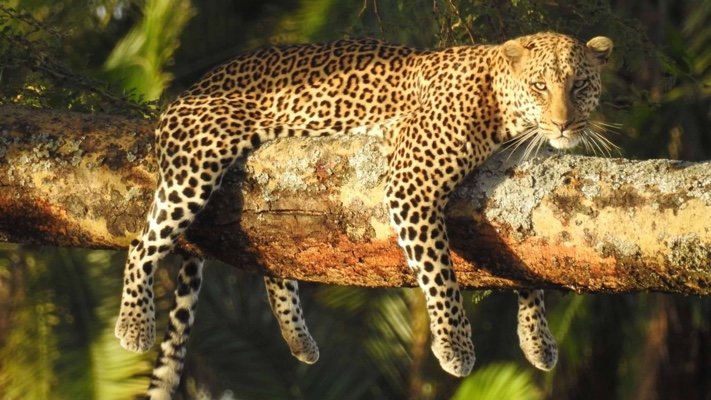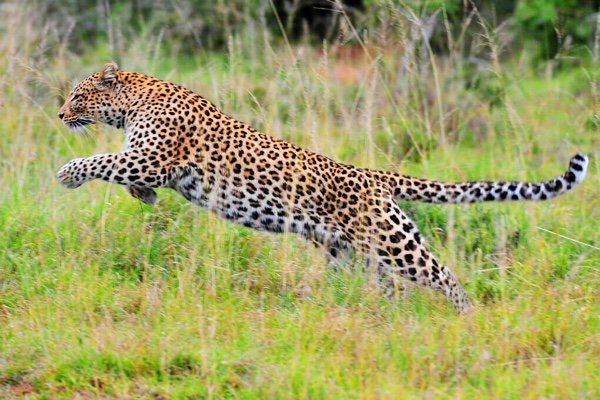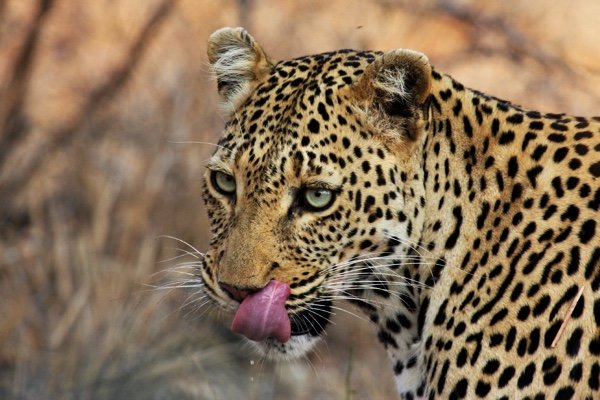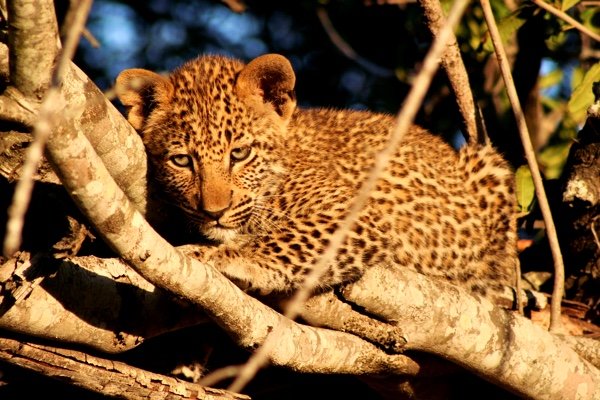Who Knew? 7 Fantastic Leopard Facts
By Lucille Sive
Leopards are one of the most elusive creatures in the African animal kingdom. Their solitary nature and cool camouflage make them particularly difficult to spot on safari, which just makes it all the more thrilling to see these large cats in the wild! But there’s more to these mysterious animals than meets the eye, did you know that leopards can jump up to 9.8 feet vertically? Read on for more fantastic facts about one of my favorite African animals.

1) Leopard Vocalizations Mean Different Things
Leopards use their voice to express different emotions and states of mind. For example, purrs usually signify contentment while a growl means the leopard is feeling angry or aggressive. Baby leopards have been known to say “urr-urr” to call their mothers. If all of these examples sound familiar, well, you’re right—it turns out leopards communicate just like your house cat!
2) Leopard Spots are Called Rosettes
If you look closely at a leopard’s spots, you will notice that many of the spots are not spots at all, but clusters of black, yellow and tan markings called “rosettes”. These patterns are unique to each leopard, like a human finger print. This pattern, combined with the yellow, brown and tan colors helps the leopard blend into the savannah habitat, making it the perfect coat to stalk prey unseen.

Photo credit: Shamwari Game Reserve.
3) African Leopards Are Just One of Nine Known Sub-Species
The African leopard, found across a variety of habitats in sub-Saharan Africa, may be the most popular type of leopard in the world, but it is far from alone: eight other sub-species of leopard are found throughout Asia and the Middle-East. These include the Indian leopard, the Javan leopard, the Arabian leopard, the Anatolian leopard, the North Chinese leopard, the Amur leopard, the Indochinese leopard, and the Sri-Lankan leopard.
4) Black Panthers Are Really Leopards in Disguise
In Africa, a "black panther" is actually called a "melanistic leopard" by scientists and researchers. And while these black cats may look spotless, if you look closely at a black panther in clear light, the leopard rosette patterns can be seen. According to researchers, the genetic mutation that causes the dark coloring may be a beneficial evolutionary trait that improves a leopard’s ability to stay concealed during nocturnal hunts.

Photo credit: Madelyne K.
5) Leopards Use Trees to Get an Edge Over the Competition
Leopards are rarely the largest predator in their habitat so they need to be careful that both their kills and their young can stay safe from other predators. That’s why their unique ability to climb trees is so important. By dragging their kills up trees they can ensure that other large predators, such as lions or hyenas, won’t try to steal their well-earned prize. It’s really just a bonus that trees are so perfect for cat naps!
6) Leopards Are Strong Swimmers
Unlike many of their big cat cousins, leopards are surprisingly strong swimmers. They actually enjoy swimming and this behavior can come in handy given the different types of habitats that leopards need to flourish in to survive.

A leopard cub.
7) African Leopards are Threatened, But Not Endangered
Of the nine sub-species of leopard, African leopards are the least endangered. However, due to ongoing habitat loss and human encroachment, African leopards are a species that the conservation community is monitoring closely.

